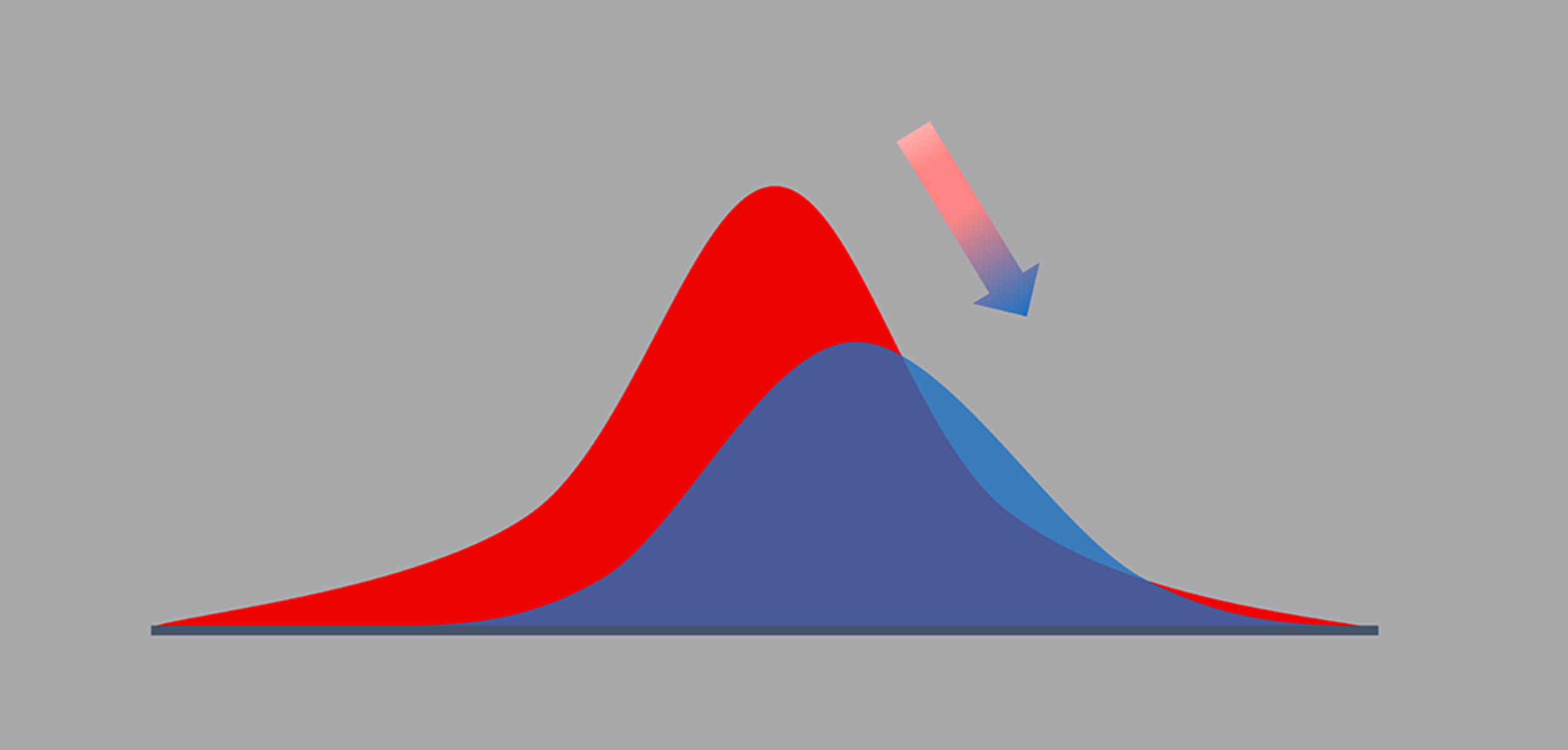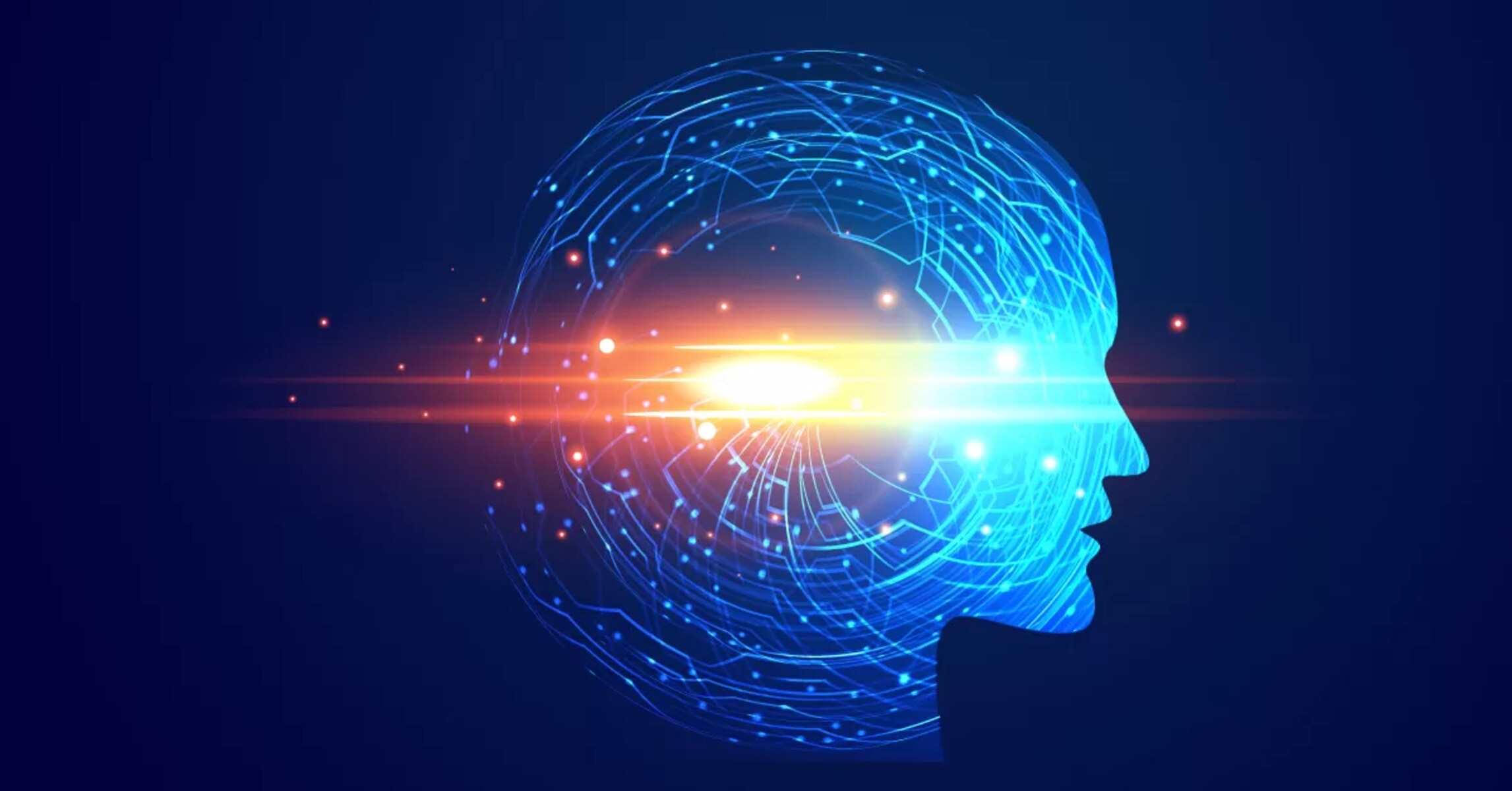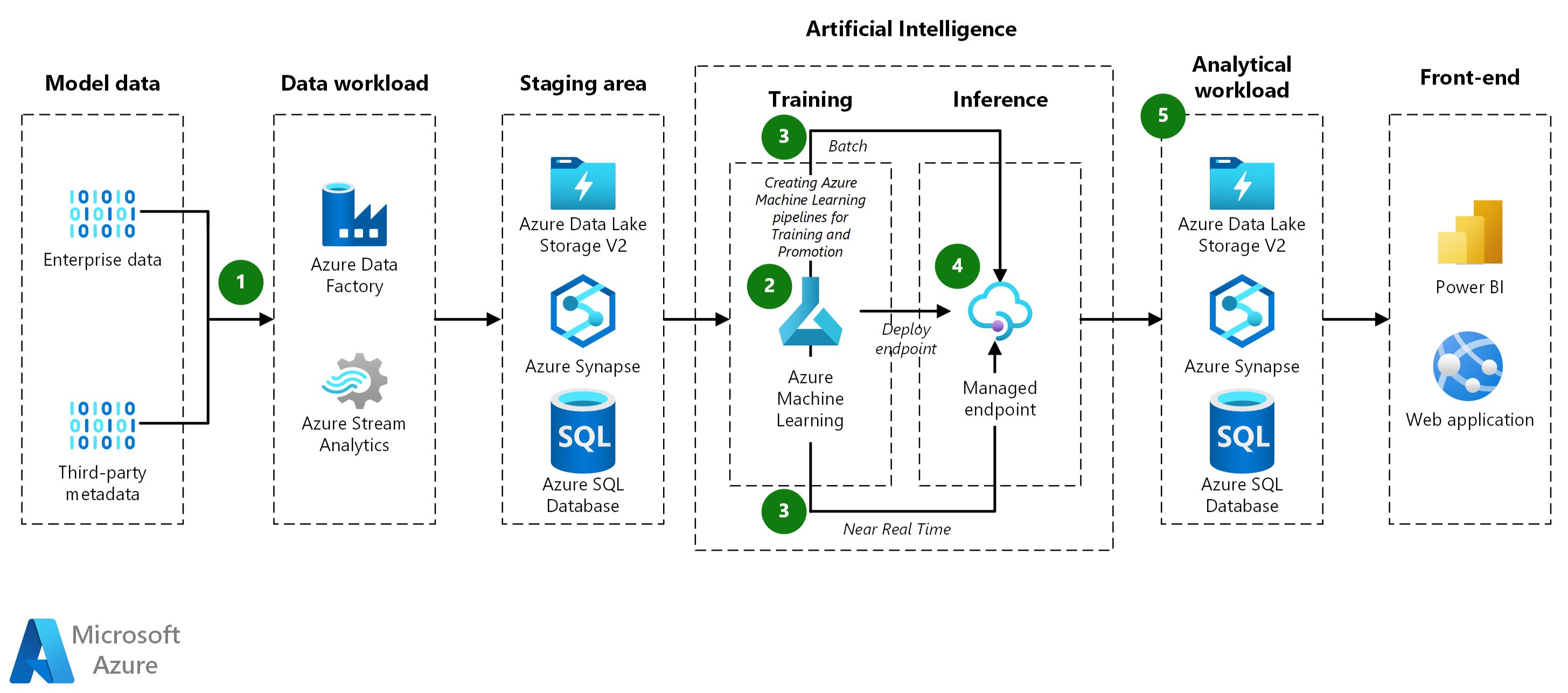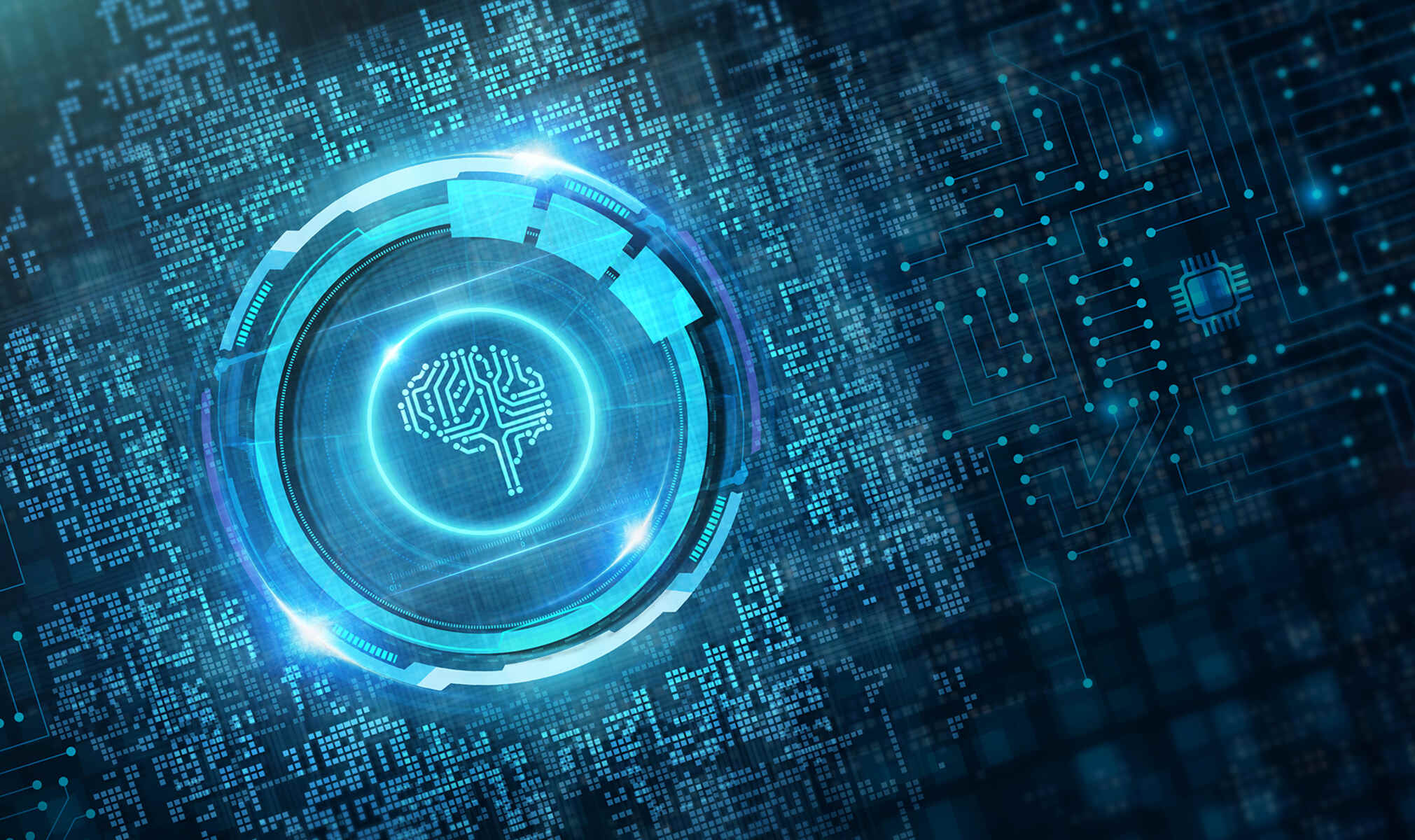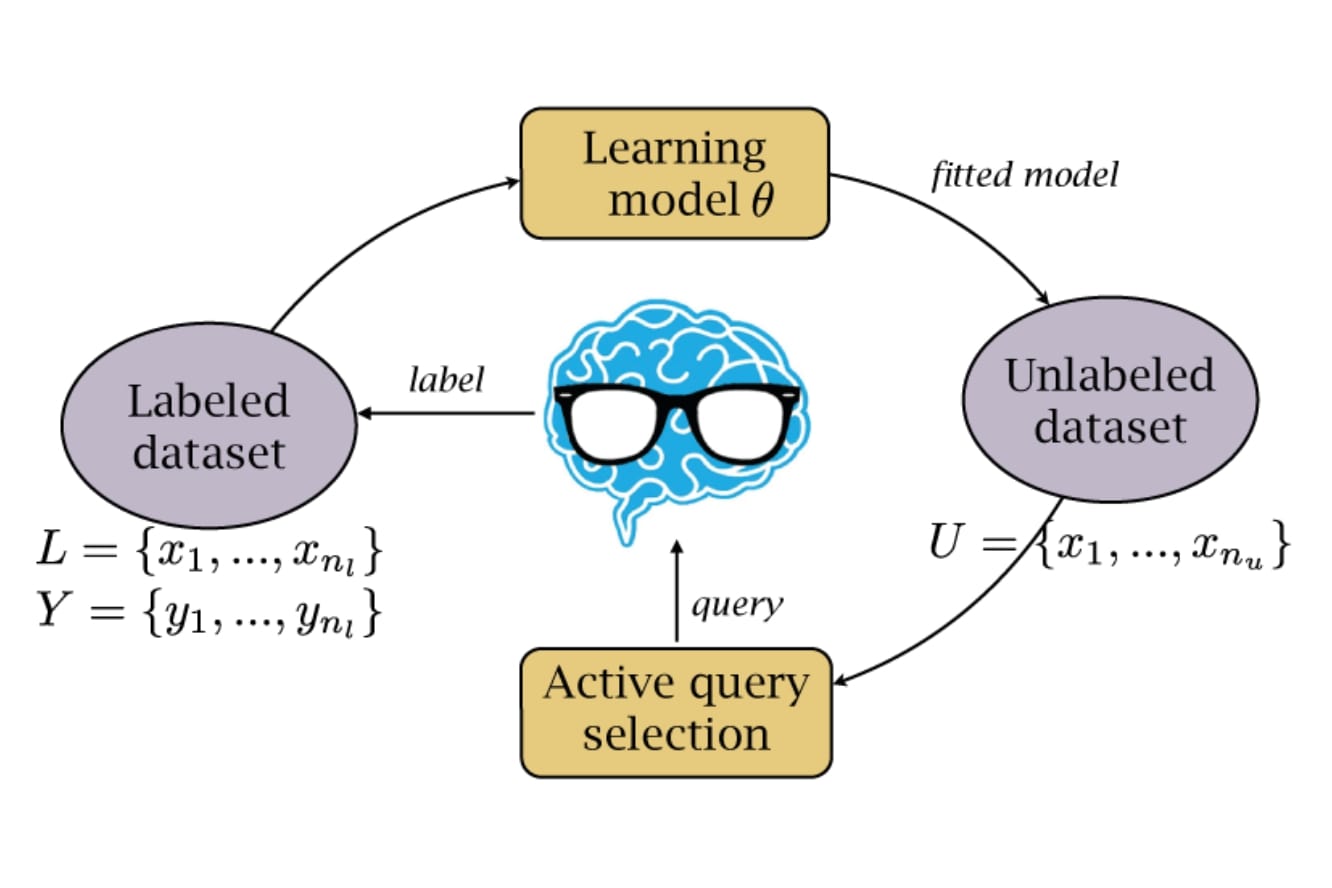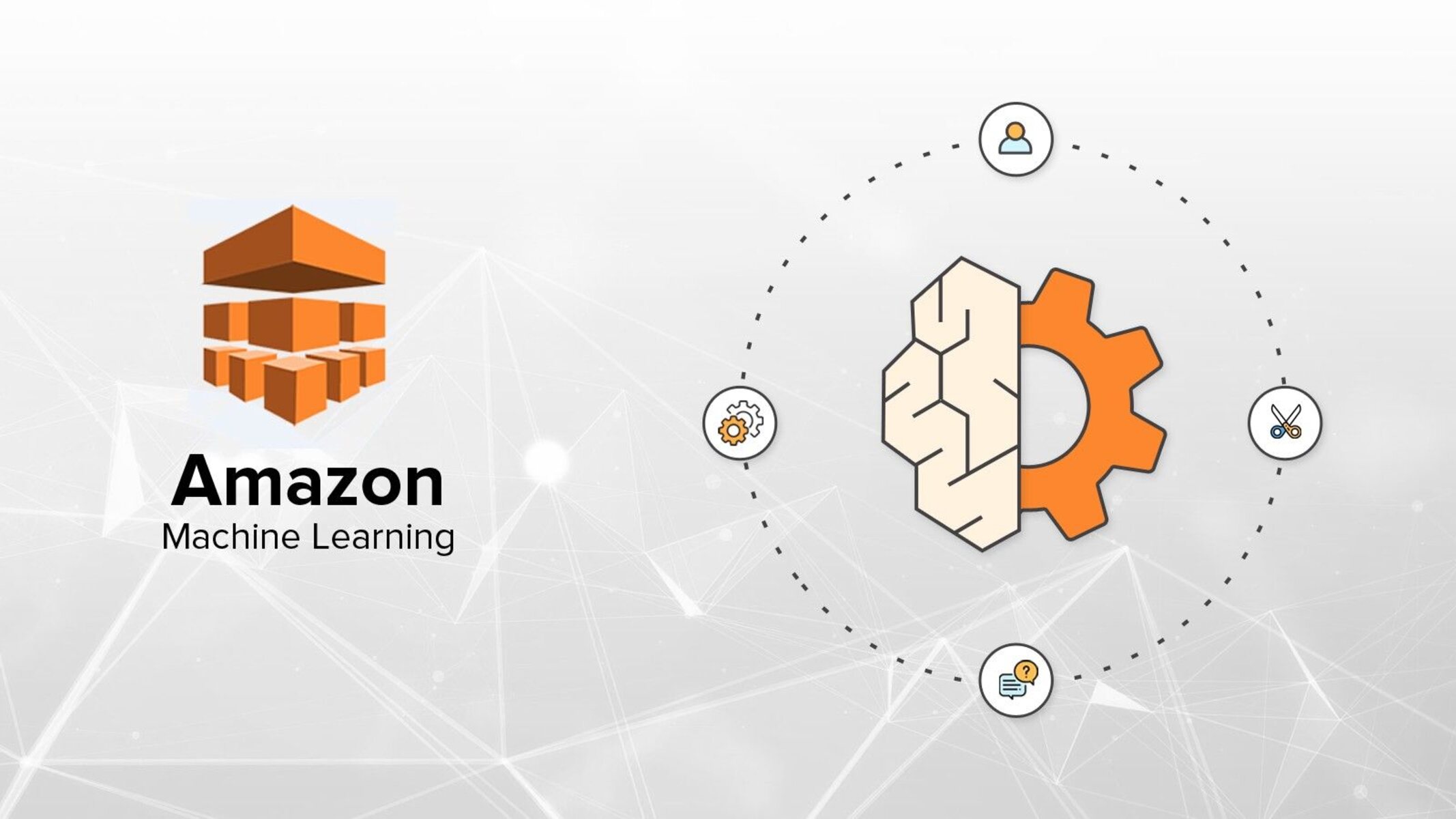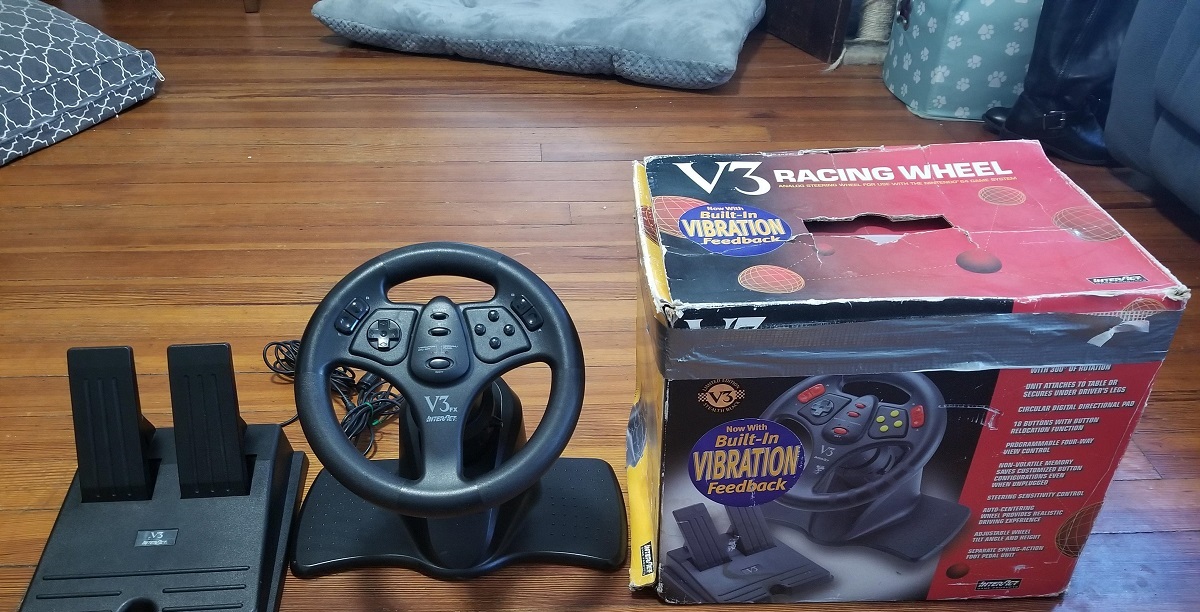Introduction
Welcome to the dynamic world of machine learning! As the field continues to evolve, researchers and practitioners face the challenge of dealing with the concept of drift. Drift refers to the phenomenon where the statistical properties of the target variable or the input features change over time, rendering trained machine learning models less accurate or even irrelevant. Understanding and effectively addressing drift is crucial for maintaining the performance and reliability of machine learning models in real-world applications.
Machine learning models are built based on assumptions about the underlying data distribution. However, in many real-world scenarios, these assumptions can become invalid over time due to various factors such as changing user behavior, evolving trends, or external influences. This introduces the concept of drift and its implications on the performance of machine learning models.
Drift can occur in different forms, including concept drift and data drift. Concept drift refers to when the underlying relationships between the input features and the target variable change. This can happen due to changes in the environment, user preferences, or the system being modeled. On the other hand, data drift refers to when the statistical properties of the input features change, while the underlying relationships remain intact. Data drift can arise due to changes in the data collection process, sensor malfunction, or shifts in data sources.
The presence of drift can have a significant impact on the accuracy and reliability of machine learning models. Models trained on historical data become less effective when the underlying data distribution changes. In some cases, models may even produce misleading or incorrect predictions, leading to potentially severe consequences. Drift detection and handling techniques are therefore essential to ensure the continued usefulness of machine learning models in dynamic environments.
Detecting drift is a critical step in mitigating its impact. Various statistical and machine learning-based methods can be employed to monitor the behavior of the model and detect changes in the data distribution. These techniques involve comparing predictions with ground truth labels or tracking changes in the statistical properties of the input features. Once drift is detected, appropriate actions can be taken to adapt the model to the new conditions.
In this article, we will explore the various types of drift, delve into the causes behind drift, and discuss the impact of drift on machine learning models. We will also explore methods for detecting drift and strategies for handling drift effectively. So, let’s dive into the fascinating world of drift and its implications in machine learning!
What is Drift in Machine Learning?
Drift, in the context of machine learning, refers to the phenomenon where the statistical properties of the target variable or the input features change over time. It occurs when the assumptions made during the training of machine learning models are no longer valid due to shifts in the underlying data distribution.
Concept drift and data drift are the two main types of drift that can be observed in machine learning models. Concept drift occurs when the relationships between the input features and the target variable change over time. For example, in a sentiment analysis model, the sentiments expressed by users on social media platforms may change as new trends emerge or user preferences shift. This change in the underlying concept can lead to decreased accuracy and reliability of the model.
Data drift, on the other hand, refers to changes in the statistical properties of the input features while the underlying relationships remain constant. This can be caused by factors such as shifts in data sources, changes in data collection processes, or sensor malfunctions. For instance, in a predictive maintenance model, temperature readings from sensors may drift due to changes in the environment or sensor calibration, impacting the model’s performance.
The presence of drift in machine learning models can have significant consequences. Models that are trained on historical data and assume a static data distribution may become less accurate or even completely irrelevant when the underlying distribution changes. This can lead to inaccurate predictions, increased false positives or false negatives, and ultimately, a decrease in the model’s effectiveness.
Detecting drift in machine learning models is crucial for maintaining model performance. Various techniques, such as monitoring prediction errors, tracking changes in statistical properties of the data, or applying statistical tests, can be used to identify the presence of drift. Once drift is detected, appropriate actions can be taken to adapt the model and ensure its continued effectiveness.
In summary, drift refers to the changes in the statistical properties of the target variable or input features over time in machine learning models. Understanding and addressing drift is essential for maintaining the accuracy and reliability of these models in dynamic environments. In the following sections, we will explore the causes of drift, its impact on machine learning models, and strategies for detecting and handling drift effectively.
Types of Drift
In the realm of machine learning, there are two main types of drift: concept drift and data drift. These types represent different aspects of change in the underlying data distribution and have distinct implications for machine learning models.
1. Concept Drift: Concept drift occurs when the relationships between the input features and the target variable change over time. This means that the fundamental concepts or notions being modeled undergo shifts or modifications. Concept drift can arise due to changes in the environment, evolving user preferences, or modifications in the system being modeled. As a result, the assumptions made during the training phase of machine learning models are no longer valid, leading to decreased model accuracy and reliability.
For example, consider a spam email classification model that is trained on historical data. Over time, spamming techniques and email content may evolve, rendering the model’s learned patterns outdated. The model may then struggle to accurately classify incoming emails as spam or legitimate due to the concept drift that has occurred.
2. Data Drift: Data drift, on the other hand, refers to changes in the statistical properties of the input features while the underlying relationships between the features and the target variable remain the same. This means that the data distribution itself has shifted, but the concept being modeled has remained constant. Data drift can occur due to various reasons, including changes in data sources, shifts in data collection processes, or sensor malfunctions.
For instance, consider a weather forecasting model that relies on temperature data from a network of sensors placed across a city. If some of the sensors malfunction or if new sensors with different calibration are introduced, it can lead to data drift. The statistical properties of the temperature readings may change, even though the relationship between temperature and weather patterns remains the same. This data drift can impact the model’s accuracy in predicting future weather conditions.
It is important to distinguish between concept drift and data drift, as they require different strategies for detection and handling. Concept drift necessitates monitoring changes in the relationships between features and the target variable, while data drift requires monitoring changes in the statistical properties of the input features.
In the next sections, we will explore the causes of drift and the potential impact it can have on machine learning models. Understanding these factors will help us develop effective strategies for handling drift and maintaining model performance in dynamic environments.
Concept Drift
Concept drift refers to the phenomenon where the underlying relationships between the input features and the target variable change over time. It occurs when the fundamental concepts or notions being modeled undergo shifts or modifications. Concept drift can have a significant impact on the performance and accuracy of machine learning models, as the assumptions made during training become invalid.
There are various causes of concept drift, including changes in the environment, evolving user preferences, or modifications in the system being modeled. Let’s take a closer look at these causes:
1. Environmental Changes: Changes in the environment can lead to concept drift. For example, consider a stock market prediction model that is trained on historical data. If significant economic events or policy changes occur, the underlying relationships between economic indicators and stock prices may change, rendering the model less effective.
2. Evolving User Preferences: User preferences are subject to change over time, and this can cause concept drift. For instance, in a recommendation system that suggests movies or products to users, their preferences may shift as new trends emerge or their tastes evolve. The model needs to adapt to these changes to continue providing relevant recommendations.
3. System Modifications: Changes in the system being modeled can also introduce concept drift. For example, in a voice recognition system, updates or improvements in the speech recognition algorithms or hardware components can lead to changes in the relationships between spoken words and their corresponding text representations, necessitating model updates.
The presence of concept drift can lead to decreased model accuracy and reliability. The models trained on historical data no longer accurately capture the current relationships between input features and the target variable. This can result in incorrect predictions, decreased customer satisfaction, or even financial losses.
Detecting concept drift is crucial for maintaining model performance. Various techniques can be employed to monitor the behavior of the model and identify changes in the underlying concept. These techniques include monitoring prediction errors, tracking changes in feature distributions, or using statistical tests to compare concept drift detection. Once concept drift is detected, appropriate actions can be taken to adapt the model to the new environment.
Handling concept drift involves updating the model using new data or retraining the model with a combination of new and historical data. It is important to strike a balance between incorporating new information and retaining knowledge from historical data to ensure the model’s effectiveness.
In summary, concept drift occurs when the underlying relationships between input features and the target variable change over time. Changes in the environment, evolving user preferences, and modifications in the system being modeled are common causes of concept drift. Detecting and handling concept drift are essential for maintaining model accuracy and reliability in dynamic environments.
Data Drift
Data drift is a phenomenon in machine learning where the statistical properties of the input features change over time, while the underlying relationships between the features and the target variable remain constant. It occurs when the data distribution itself shifts, leading to potential challenges for machine learning models. Data drift can arise from various causes, such as changes in data sources, shifts in data collection processes, or sensor malfunctions.
Let’s explore some common causes of data drift:
1. Changes in Data Sources: Data drift can occur when there are changes in the data sources from which the model receives inputs. For example, imagine a speech recognition system that is trained on data collected from a specific microphone. If the microphone is replaced with a different model or if the recording conditions change, it can lead to variations in the statistical properties of the input features, impacting the performance of the model.
2. Shifts in Data Collection Processes: Changes in the way data is collected can introduce data drift. Consider a sentiment analysis model that is trained on customer reviews. If the method of collecting reviews changes, such as switching from manually curated sources to social media scraping, it can result in differences in the statistical distribution of the input data. This shift can affect the model’s ability to accurately predict sentiment for new data.
3. Sensor Malfunctions: In scenarios where machine learning models rely on sensor data, sensor malfunctions can cause data drift. For example, in an autonomous vehicle, if the GPS sensor provides inaccurate readings or if the camera sensors become faulty, it can lead to changes in the statistical properties of the input features, potentially affecting the performance of navigation or object detection models.
Data drift can have a significant impact on model performance. As the statistical properties of the input features change, models trained on previous data can become less accurate and reliable. This can lead to incorrect predictions, increased false positives or false negatives, and ultimately, a decrease in the model’s effectiveness in real-world scenarios.
Detecting data drift is crucial for maintaining model performance. Various techniques can be employed to monitor changes in the statistical properties of the input data. These techniques include tracking statistical metrics such as mean, standard deviation, or entropy of the features and comparing them over time. If significant changes are detected, it indicates the presence of data drift, and appropriate actions can be taken to adapt the model.
To handle data drift, models can be updated using new data or by retraining the model with a combination of historical and new data. It is important to strike a balance between incorporating recent data to capture changes in the data distribution and retaining knowledge from historical data to maintain the model’s performance on stable patterns.
In summary, data drift refers to changes in the statistical properties of the input features while the underlying relationships between the features and the target variable remain the same. Changes in data sources, shifts in data collection processes, and sensor malfunctions are common causes of data drift. Detecting and addressing data drift are crucial for maintaining the accuracy and reliability of machine learning models in dynamic environments.
Causes of Drift
Drift in machine learning models can be caused by various factors that lead to changes in the underlying data distribution or the relationships between the input features and the target variable. Understanding the causes of drift is essential for effectively detecting and handling it. Let’s explore some common causes:
1. Environmental Changes: Changes in the environment can contribute to drift in machine learning models. Environmental factors, such as shifts in demographics, economic conditions, or regulatory policies, can impact the target variable or the relationships between the features and the target variable. For example, in a demand forecasting model for a retail business, changes in consumer behavior due to external factors like seasonal trends or economic downturns can introduce drift.
2. Evolving User Behavior and Preferences: User behavior and preferences are subject to change due to evolving trends, cultural shifts, or personal preferences. This can introduce drift in models that rely on user-generated data. For instance, in a recommender system that suggests products or content to users, their preferences may shift over time, making it necessary to adapt the model to capture these changes.
3. System and Process Changes: Drift can also occur due to modifications in the system being modeled or changes in the data collection processes. Updates in algorithms, hardware, or software systems can alter the relationships between the input features and the target variable. Similarly, changes in data collection methods, such as switching data sources or modifying data preprocessing techniques, can introduce variations in the data distribution, leading to drift in machine learning models.
4. External Factors and Events: External factors and events, such as natural disasters, economic crises, or global pandemics, can have a significant impact on the target variable and the relationships between features. For example, a marketing campaign response model may experience drift if a major event influences customer behavior in unexpected ways. Adapting the model to account for these external factors is crucial to maintaining its accuracy.
5. Data Quality Issues: Drift can also arise due to data quality issues, such as inconsistencies, biases, or errors in the data. These issues can affect the statistical properties of the data and introduce inaccuracies in the training process, impacting model performance. Regular data quality assessments and preprocessing techniques can help mitigate the impact of data quality issues on drift.
It is important to note that drift can be caused by a combination of factors and may vary based on the specific machine learning application. Monitoring the data and model performance regularly is key to identifying the causes of drift and taking appropriate measures to address it.
In the upcoming sections, we will explore the impact of drift on machine learning models and discuss various techniques for detecting and handling drift effectively.
Impact of Drift on Machine Learning Models
Drift in machine learning models can have a significant impact on their performance and reliability. As the statistical properties of the target variable or input features change over time, models trained on historical data can become less accurate and even produce misleading or incorrect predictions. Understanding the impact of drift is crucial for adapting models and maintaining their effectiveness in real-world applications.
1. Decreased Accuracy: One of the primary consequences of drift is a decrease in model accuracy. Models that are trained on historical data assuming a static data distribution may struggle to make accurate predictions when the underlying distribution changes. This can lead to incorrect predictions, increased false positives or false negatives, and a decrease in overall model performance.
2. Reduced Generalization: Drift can also lead to reduced generalization of machine learning models. Models that perform well on historical data may fail to generalize to new or unseen data due to the mismatch between the training data and the current data distribution. The models may become too specialized to the historical patterns, making it difficult to generalize to new scenarios.
3. Increased Risk: Drift can introduce risks and potential consequences in various domains. For example, in healthcare, a model that predicts patient outcomes may become less accurate if there are shifts in patient demographics or changes in medical practices. Incorrect predictions can lead to suboptimal treatment decisions and adverse patient outcomes. In finance, models predicting market trends may fail to capture changes in investor behavior or economic factors, resulting in financial losses.
4. Decision-Making Biases: Drift can introduce biases in decision-making processes. Models that are not updated to account for drift may make biased predictions or recommendations, as they are based on outdated information. This can lead to unfair treatment or discriminatory practices, particularly in sensitive domains such as hiring, lending, or criminal justice.
5. Deterioration of Model Value: Over time, drift can erode the value of machine learning models. Models that were once effective and valuable assets may become obsolete as the underlying data distribution changes. This reduces the usefulness of the models and requires investments in monitoring, detecting, and handling drift to maintain their value over time.
Overall, the impact of drift on machine learning models affects their accuracy, generalization, risk management, fairness, and value. Being aware of this impact and actively addressing drift is essential to ensure that models remain reliable, effective, and aligned with the changing data distribution in dynamic real-world environments.
In the next sections, we will explore techniques for detecting drift and discuss strategies for handling it effectively to mitigate the impact on machine learning models.
Detecting Drift
Detecting drift in machine learning models is a crucial step in mitigating its impact and ensuring that models remain accurate and reliable. By monitoring the behavior of the model and comparing it to the changing data distribution, drift detection techniques can identify deviations from the expected performance. Various methods can be employed to detect drift, ranging from statistical tests to comparing predictions with ground truth labels.
1. Monitoring Statistical Metrics: Drift detection techniques often involve monitoring statistical metrics of the input features or the model’s performance over time. Metrics such as mean, standard deviation, variance, or entropy of the features can be tracked and compared with historical values. Significant deviations from the expected range can indicate the presence of drift. Similarly, monitoring metrics like prediction accuracy, precision, recall, or area under the curve (AUC) can reveal changes in model performance.
2. Threshold-Based Approaches: Threshold-based approaches involve setting predefined thresholds for statistical metrics or model performance, beyond which the presence of drift is detected. Once the monitored metrics cross these thresholds, it indicates a significant change from the expected behavior, triggering drift detection. These thresholds can be determined through domain expertise, statistical analysis, or using techniques like anomaly detection.
3. Prediction Errors and Residual Analysis: Drift can be detected by analyzing the prediction errors or residuals. By comparing the model’s predictions with ground truth labels or expected outcomes, unexpected variations in prediction errors can indicate the presence of drift. Statistical techniques such as hypothesis testing and regression analysis can be applied to evaluate the significance of the errors and identify when drift occurs.
4. Change Detection Algorithms: Change detection algorithms, also known as change point detection or anomaly detection algorithms, can be employed to identify abrupt or gradual changes in the data distribution. These algorithms analyze the sequential nature of the data and identify points in time where significant changes occur. Techniques like cumulative sum (CUSUM), sequential probability ratio test (SPRT), or Kalman filters can be utilized for detecting drift using change detection approaches.
It is important to note that the choice of drift detection technique depends on the specific machine learning application and the nature of the data. Techniques that require historical labeled data may not be applicable in some scenarios. Therefore, it is essential to select and apply the most appropriate drift detection method for the given context.
By effectively detecting drift, machine learning practitioners can identify when model performance is compromised and take necessary actions to address it. In the subsequent sections, we will discuss strategies for handling drift and maintaining model performance in the presence of changing data distributions.
Handling Drift
Handling drift in machine learning models is crucial to maintain their accuracy and reliability in the face of changing data distributions. By adapting the models to the new conditions, practitioners can ensure that the models continue to make accurate predictions. Various strategies can be employed to handle drift effectively:
1. Model Updating: One approach to handling drift is to update the existing model using new data. This can involve retraining the model on a combination of historical and recent data to capture the changes in the data distribution. Techniques like online learning or incremental learning can be used to update the model in real-time, allowing it to adapt as new data becomes available.
2. Ensemble Methods: Ensemble methods can be effective in handling drift. By combining multiple models that are trained on different subsets of data, ensemble methods can improve the model’s robustness to changes in the data distribution. Techniques like bagging, boosting, or stacking can be employed to create ensembles that can handle drift more effectively than individual models.
3. Domain Adaptation Techniques: Domain adaptation techniques aim to align the data distribution across different domains to mitigate the impact of drift. These techniques can be useful when there is a shift in the data source or a change in the target domain. Approaches such as feature augmentation, instance weighting, or domain adversarial training can help adapt the model to the new data distribution.
4. Continuous Monitoring and Re-evaluation: Regularly monitoring the model’s performance and re-evaluating its effectiveness is essential to handle drift. This can involve collecting and analyzing metrics such as accuracy, precision, recall, or error rates. If significant degradation in performance is detected, it indicates the presence of drift, and appropriate actions, such as model updating or retraining, can be taken.
5. Change Detection and Trigger-Based Updates: Drift detection techniques can be utilized to trigger updates to the model when significant drift is detected. Instead of continuously updating the model, trigger-based approaches adapt the model only when necessary. This can help reduce computational costs and ensure that updates are applied when meaningful changes occur.
It is important to note that handling drift is an ongoing process, and it requires continuous monitoring and adaptation. Drift can be dynamic, and models must be capable of adapting to the changing data distribution over time. Additionally, the choice of handling strategy depends on the specific application, available resources, and the importance of real-time adaptations.
By effectively handling drift, machine learning models can maintain their accuracy and reliability, ensuring their continued usefulness in real-world scenarios where the data distribution is subject to change.
In the final section, we will conclude our exploration of drift in machine learning and summarize the key insights covered.
Conclusion
Drift is an inherent challenge in machine learning, as the statistical properties of the target variable or input features can change over time. Understanding and effectively addressing drift is crucial for maintaining the accuracy and reliability of machine learning models in dynamic environments. Throughout this article, we have explored the different types of drift, including concept drift and data drift, and discussed their causes and impact on machine learning models.
Concept drift occurs when the relationships between the input features and the target variable change over time, while data drift refers to changes in the statistical properties of the input features. We have learned that drift can be caused by various factors, including environmental changes, evolving user preferences, modifications in the system being modeled, external factors, and data quality issues.
The impact of drift on machine learning models is significant, leading to decreased accuracy, reduced generalization, increased risk, decision-making biases, and a deterioration of model value. Therefore, detecting drift is crucial. Drift detection techniques include monitoring statistical metrics, using threshold-based approaches, analyzing prediction errors, and applying change detection algorithms.
Handling drift involves strategies such as model updating, ensemble methods, domain adaptation techniques, continuous monitoring and re-evaluation, and trigger-based updates. These strategies help adapt the models to the changing data distribution, ensuring their continued accuracy and reliability.
In conclusion, drift presents a continuous challenge in machine learning, requiring proactive monitoring and adaptation to maintain model performance. By understanding the causes and types of drift, detecting it effectively, and employing suitable strategies for handling it, practitioners can ensure that their machine learning models remain accurate and reliable in dynamic environments.







